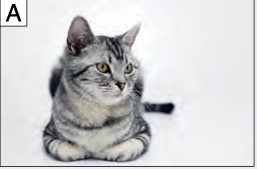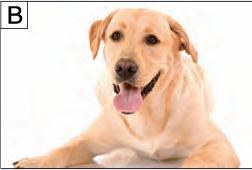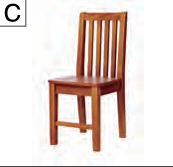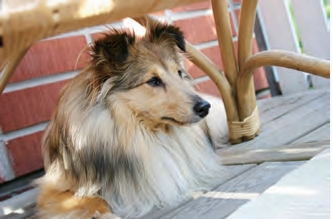热身 Warm-up
给下面的词语选择对应的图片 Match the pictures with the words.






课文 Text
1 在家 At home 09-1
Xiǎo māo zài nǎr?
A: 小 猫 在 哪儿?
Xiǎo māo zài nàr.
B: 小 猫 在 那儿。
Xiǎo gǒu zài nǎr?
A: 小 狗 在 哪儿?
Xiǎo gǒu zài yǐzi xiàmiàn.
B: 小 狗 在 椅子下面。

English Version
A: Where is the kitty?
B: The kitty is over there.
A: Where is the puppy?
B: The puppy is under the chair.
New Words
1. 小 xiǎo adj. small, little
2. 猫 māo n. cat
3. 在 zài v. to be in/on/at
4. 那儿 nàr pron. there
5. 狗 gǒu n. dog
6. 椅子 yǐzi n. chair
7. 下面 (下) xiàmiàn(xià) n. under, below

Nǐ zài nǎr gōngzuò?
A: 你在哪儿工作?
Wǒ zài xuéxiào gōngzuò?
B: 我在学校工作。
Nǐ érzi zài nǎr gōngzuò?
A: 你儿子在哪儿工作?
Wǒ érzi zài yīyuàn gōngzuò, tā shì yīshēng.
B: 我儿子在医院工作,他是医生。
A: Where do you work?
B: I work in a school.
A: Where does your son work?
B: My son works in a hospital. He is a doctor.
- 8. 在 zài prep. in/on/at
- 9. 哪儿 nǎr pron. where
- 10. 工作 gōngzuò v./n. to work; job
- 11. 儿子 érzi n. son
- 12. 医院 yīyuàn n. hospital
- 13. 医生 yīshēng n. doctor

Nǐ bàba zài jiā ma?
A: 你爸爸在家吗?
Bú zài jiā.
B: 不在家。
Tā zài nǎr ne?
A: 他在哪儿呢?
Tā zài yīyuàn.
B: 他在医院。
A: Is your father at home?
B: No, he isn’t.
A: Where is he?
B: He is in the hospital.
- 14. 爸爸 bàba n. father
注释 1 动词“在” The Verb“在”
“在”是动词,后边加上表示位置的词语做句子的谓语,用于指示人或者事物的位置。例如:
“在” is a verb. When it is followed by a word of locality and acts as the predicate of a sentence, it indicates the location of somebody or something. For example:
| Subject | Predicate | |
|---|---|---|
| 在 | Word of Locality/Direction | |
| 我朋友 | 在 | 学校。 |
| 我妈妈 | 在 | 家。 |
| 小狗 | 在 | 椅子下面。 |
注释 2 疑问代词“哪儿” The Interrogative Pronoun“哪儿”
疑问代词“哪儿”用于疑问句中,询问人或事物的位置。例如:
The interrogative pronoun “哪儿” is used to ask about the location of somebody or something. For example:
- 我的杯子在哪儿?
- 你的中国朋友在哪儿?
- 小猫在哪儿?
注释 3 介词“在” The Preposition“在”
“在”也是介词,后边加上表示位置的词语,用于介绍动作行为发生的位置。例如:
“在” can also act as a preposition, used before a word of locality to introduce the place where an action or behavior takes place. For example:
| Subject | Predicate | ||
|---|---|---|---|
| 在 | Word of Locality/Direction | Verb | |
| 我 | 在 | 朋友家 | 喝茶。 |
| 他们 | 在 | 学校 | 看书。 |
| 我儿子 | 在 | 医院 | 工作。 |
疑问助词“呢”(2) The Interrogative Particle “呢”(2)
疑问助词“呢”用在句末,表示疑问,用于询问人或事物的位置。例如:
Used at the end of a sentence, the interrogative particle “呢” asks about the location of somebody or something. For example:
- (1)我的小猫呢?
- (2)我的杯子呢?
- (3)他在哪儿呢?

Comments